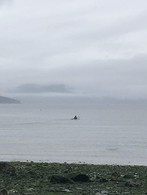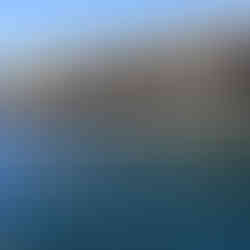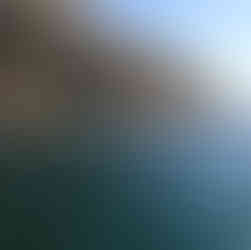
I'm back in Seattle after a four-day adventure in my trusty kayak, circumnavigating Decatur, Lopez, and Shaw Islands in the San Juans. Probably as an outlaw, it turns out. More on that later.
Monday, May 25
Up early to load the car and drive from Seattle to Anacortes in pouring rain. It eases towards Mount Vernon but by then either the sound of the rain or my liter of coffee have made me absolutely desperate for a loo. (Why, after 36 years in the US, can I not accustom my inner ear to “bathroom”? I use the word all the time, but what I think is “loo.” Or, to split two typographical hairs at once, ‘loo’.) Not much open in this time of plague but luckily I recall that there's a porta-potty - TARDIS of the nether necessities - at the entrance to one of our favorite local dog walks, the Padilla Bay Reserve. So after clenching my teeth for ten miles, and cursing a dozen slow drivers and red lights, I leave SR-20 at speed, veering to starboard like a fighter pilot on a strafing run; half a mile later I screech to a grateful halt.
Still plenty of time to catch the ferry, which anyway is less than half full. The crossing to Lopez Island, during which I sit dutifully in the car and struggle into my drysuit, is uneventful until we arrive - the car won't start. Apparently the ferry people are used to this; a man with an emergency battery pack shows up before I've even had a chance to crank the thing for a third time, and is so busy chatting to his buddy that he doesn't even register my voluble apologies.
Tad’s house is a mile away; the car makes it; the rain has started again. We carry the kayak and gear down across a stony beach to the low tide line at Shoal Bay, and I kneel in the seaweed to complete the three-dimensional kayak-packing jigsaw. Water is coming from both directions: clams all around me spit at the sky and the sky says “Ha!” and spits back:

My friend Doane takes pictures of the intrepid explorer doing beach yoga (expert yogi will no doubt criticize my form in executing the classic "Damp Warrior" pose) and setting off:
It's a strange seven miles to my first campsite: early afternoon in late May but the sky is oil-dark, apocalyptic, menacing; there’s about as much solar radiation as you’d expect on a bad day in December in one of the rainier favelas of Hell. Cypress Island has all but vanished:

Also my calculations were that the current in Rosario Strait would be fine until it switched north around 2:30 - 3 p.m., but when I turn south into the channel between James and Decatur at 2.20 I have to spend 10 minutes fighting my way down against a wickedly sudden wrong-way acceleration. I count strokes to one hundred in Spanish, at least five times, which is perhaps a mistake because I can count faster in English; finally, like a climber coming up over the lip of a cliff, I heave myself into the calm water of the little bay. An orange jellyfish that wouldn't fit on a dinner plate slides past me on its way out into the current, muttering about Trump stealing its hairstyle and fleeing north in the direction of Canada.
No one on the island at all. Just a nice-looking sailboat at the jetty. A man emerges from it and introduces himself, improbably, as a High School teacher; later in the conversation he mentions in passing that his absent wife is an attorney. About six o'clock the sky brightens and Huge Liability is illuminated by an unexpected shaft of sunlight - which doesn't last long but is a good augury as it turns out:

Criminal gangs of raccoons are widely reported on all these islands - the Grays, the Fleas, the Stripes - so I’m careful with my food. Not careful enough: I turn my back to pick up a piece of driftwood and the package containing my delicious gourmet Trader Joe's curry vanishes as if by magic. No raccoons in sight and I am mystified: did I have a Moment and put the package down somewhere else? Then I spot it, ripped open and oozing 20 feet away. I stand there with my mouth agape in wonder: these guys are lightning! But a couple of minutes later the actual culprit flies down from a tree - a crow the size of a pheasant. Luckily I never travel without extra food, which I eat warily next to a smoky driftwood fire:

After dinner I discover the skull of an extinct duck:

Very high tides the next couple of days and the line with which I've secured the kayak on the beach is little comfort: I spend much of the night either imagining giant raccoons with shaved heads and neck-tats or listening to the slap-and-tickle of waves that sound too close.
Tuesday, May 26th
Can’t sleep beyond 4:30, so that's when I get up and discover that the cylindrical plastic bear can containing most of my food, which I had left under the picnic table, has gone. Another crow? Come on, it weighs 15 pounds! It has been rolled across the grass and under, then beyond, a second picnic table; though I have neither seen nor heard them, I blame the Stripes. A good thing they didn't roll it in a slightly different direction or it would have ended up in the water. In which case it would have floated away, and my provisions would have become the subject of a puzzled account in the journal of a 22nd-century beachcomber in Patagonia or Kamchatka:

The predicted currents mean there's no point in leaving before 7:30 , so I enjoy an extremely relaxed breakfast of instant coffee and Camping Concrete (3/4 cup of oatmeal, 1/4 cup brown sugar, 1/4 cup dried milk powder, 1/4 cup pecans, 1/4 cup golden raisins). Then I take my time packing up and I even barricade the kayak hatches with sturdy driftwood, rake the trees with what I hope is a don’t-even-think-about-it expression, and go for a short walk.
Gray again at first: looking east to Mount Erie the surface of the water is the color of tungsten. 20 minutes into the paddling I discover that I’ve made the rookie mistake of not checking my skeg immediately on leaving the beach - stuck. I make a half mile detour to a beach on Decatur Island; sure enough, my knife disgorges four large pebbles that are jammed into the box. An easy fix and on I go. Clearing now over Decatur and Lopez Pass to the West.
The first seven or eight miles today is a routine slog in slack water. I could have waited another hour or so and ridden a 3-knot southerly ebb, but I chickened out after considering the possibility of rounding Point Colville only to be sucked out into the Strait of Juan de Fuca like a thread of fiberglass into a giant washing machine. Before I even get there I can see miles of standing whitecaps further south: no coming back from that without a Hail Mary on the VHF and the divine intervention of the Coast Guard.
As it is I glide round the corner with ease, just after surprising an eagle in the day’s first direct sunshine. It was on a rock not much more than arms length away but you'll have to peer closely at this photograph for the hint of black and white marked by the arrow above the orange patch at left:

And so to the south end of Lopez Island, which I have wanted to paddle for so long. It is every bit as wild and beautiful as its reputation - and today at least it's not (per reputation) windy or rough. I do have to paddle “uphill” for the next few miles: the bull kelp keeps helpfully reminding me that I'm in a big back-eddy.

But oh, believe me, I'm not complaining:
Mixed feelings in one way, however - and an acute sense of my own comical hypocrisy. This spectacular coast is festooned with PRIVATE KEEP OUT signs at almost every point where there’s enough landing space for an otter to come ashore and poop. I find myself thinking what a shame this is, and imagine Woody Guthrie kayaking here with a paint brush and changing all the signs to THIS LAND IS THEIR LAND. Then five minutes later I'm thinking: Ooooh how I'd love to come here and build a little house in one of these coves, with trees at the back and facing south across a grassy slope to a private beach …
It’s a magical place, anyway, intricate as nature itself - and (thank you, State of WA) the countless small offshore islands have been made into private havens for the seals, murres, guillemots, crabs, cormorants. THIS ROCK IS THEIR ROCK!
Shortly before Iceberg Point I do find a cove where the only sign, ABSOLUTELY NO FIRES (posted sensibly enough above a few hundred tons of bone-white driftwood), suggests that I’m free to stop for lunch. I do, gratefully, and bask languidly for over an hour ...

... before proceeding around Iceberg Point for an even longer stop (nap, actually) while waiting for the current to turn.
It's about four miles northwest from here to Cattle Pass, the narrow cervix that divides Lopez in the east from San Juan Island in the west and the Strait of Juan de Fuca in the south from the San Juan Channel that runs north between the islands. Threading my way among the small islands south of the pass, I start to hear a noise like a stressed diesel going uphill, or giants snoring underground. The pitch is at the limit of hearing, less a noise than a tremor. Gradually the source becomes apparent: dozens, perhaps hundreds of sea lions grumbling to each other on Whale Rocks a good couple of miles away across the water. I stop to listen, and take a selfie; I'm having a lot more fun than my expression suggests:

Cattle Pass tide rips have a reputation and there's a 4+ knot maximum flood at about 4 pm, but I time it nicely. I maneuver into the flow when it's at about 3 knots, skirt the whiter, bumpier stuff, and briefly clock a satisfying 7 knots while paddling through. Also: I expected to have wind in my face here but there's almost nothing. The northern flow continues too. But it’s soon only about half a knot and by now I'm truly done for the day - the last three miles to Turn Island seem like six.
As I come round the west end of the island and in towards the beach I see something bizarre and uncanny in the water: two upright ears moving purposefully in the same direction. It's a deer swimming ashore:

Deserted beach! Grassy campsite right behind it! And a mile’s amble round the island, during which I see three more deer. I chat briefly with a couple who have motored over from Friday Harbor for a walk. At one point he says something about the election. It's calibrated nicely to test the waters, saying-without-saying that they detest Trump and are terrified by what is happening to the country. I offer a dry chuckle that's calibrated to show that I agree but without inviting further discussion: it's only a day that I've been away from news of that other, longer-running pandemic - the highly infectious and lethal Covfefe-2016 virus, which attacks not only the brain but the moral character - and I just don't want to talk about it. The subject changes to children, island living, and of course raccoons.
After they get into their boat and putter away I make myself a nice dinner - notice that classy canned wine. Not shown in the photograph is the 600 mg chaser of ibuprofen:

Time to sit and write and stare vacantly into space, and finish the wine while watching the sky prepare a salmon-rubbed-with-paprika sunset:

I know I'll have to start early to make Jones Island - there will be a south current building all morning - but I'm seriously, gloriously tired and it feels like some kind of sacrilege to set an alarm.
Wednesday, May 27th
According to the Current Atlas I have woken up early enough, barely. So I attempt to be more efficient than usual with breakfast and packing up. Luckily I’ve already put away the food when I dismantle the tent; when I turn around again two exceptionally fat and smug-looking raccoons are sitting on the kayak having a discussion about how to paddle it. Unfortunately the camera is in my PFD right next to them. When I say good morning they hop down and waddle off along the waterline, throwing contemptuous glances over their shoulders and chittering to each other like a couple of overweight teens on a beach holiday. A few minutes later I push off into the channel and see them eyeing me from behind a log.
The Anacortes to Friday Harbor ferry comes from my right just as I start out, stately and white as a motorized wedding cake. I watch it disappear into the bay on the left before starting my paddle north across the channel, but then another one emerges from behind a headland to the northwest. I wait nervously, preparing to throw the gear shift into reverse, but the second ferry also heads to my left; after looking both ways, I sprint across to the safety of west Shaw Island. It’s an absolutely spectacular, perfect morning with the water like blue beach glass and the air so still I can hear an eagle mewing in the distance.

When I look back, the Olympics have appeared behind Friday Harbor:

I'm working against a one- to one-and-a-half-knot current so I can't be too relaxed; it makes for a pleasant workout over the next two and a half hours up past Shaw and Crane to Jones Island. I arrive sweaty and in need of a break, and I am rewarded by a perfect deserted crescent of beach on the southeast corner of the island. I strip to my skivvies, lay out my damp gear on a white driftwood tree trunk that might work as a femur for a creature three times the size of Brachiosaurus, and spend well over an hour sunbathing on a rock in positively Mediterranean warmth:
Later I walk almost all the way around the island, enjoying the sea views and pretty bays but also cutting through the middle where there is deep, dense, overgrown forest filled with deer and butterflies and the songs of invisible birds. In a big area of large blown-down trees I find a huge straight nurse tree, crouched over a more ancient stump; the roots remind me of the banyans at Angkor:
For once my timing of the currents is perfect: after a bite or three of lunch I strike out across Spring Passage, which divides Jones from Orcas, and the current has switched south / southeast so I get a delightfully smooth two-knot drift that takes me north of Crane Island; I'm scarcely having to paddle at all as Turtleback Mountain slides into view behind Deer Harbor. I have the VHF monitoring channel 16. The deep peace around me is strangely underlined by the courteous voice of the Victoria Coast Guard dealing with a Mayday. All stations all stations all stations. 18-foot red Sunfish grounded on rocks in the [???] channel. A boat offers to assist and quickly confirms that the situation only rates Seriously Annoying; no imminent danger, no injuries. Half an hour later, the nice woman at Victoria CG comes back on to let us all know that the situation has been dealt with - aside from the repair bill, presumably. By that time I’m drifting underneath a pair of eagles that are sitting almost shoulder-to-shoulder in a tree at Broken Point:
And so to my final stop, tiny Blind Island. Google Earth suggested a barren rock, but there are four nice campsites and quite a bit of tree cover. Three of the sites are recently mown; #4, at the top, is overgrown with waist-high grass. I opt for the east-facing #3, which has a breathtaking view past the Shaw Island ferry dock to Mount Baker. My camera can't begin to do it justice:

20 minutes later, while I’m still setting up, a man shows up in an aluminum Washington State Parks boat, gets out a gas-powered weed wacker, and spends an hour finishing the job he had obviously started the day before. When I hear him putting tools away I walk over to introduce myself. He hasn’t seen me, nearly jumps out of his skin, and says “Camping? You can’t. Not allowed.” I protest that the Governor re-opened the parks on May 14th, but he points out what I should have recognized before even planning this trip - that’s day use only. I shrug: I may be a criminal but I’ve already paid my $12 for the night - $20 actually because I didn't have any change - and more to the point I’m not about to pack up again and set off into the sunset with nowhere to camp. At that point it’s his turn to shrug and he somewhat sheepishly asks if I can give him a hand. We walk down to the boat and he shows me that his rear anchor line is enjoying an intimate relationship with his propeller. The half hour that we spend man-handling the boat and wading and shoving includes me hauling hard on a front anchor line that should have been replaced during the first Clinton administration. It snaps in two, tumbling me backwards onto the rocks, but no damage. Finally the problem is solved and he says with a grin: “That was great. Without you here I could have been stuck for the night. Stay as long as the hell you like.”
The top of the island is covered in a pretty sedum that Google Lens tells me is Broadleaf Stonecrop, and both a feathery purple grass and a purple-flowering plant with boxy pods that neither it nor I can name:
While I examine these I hear a noise like distant gunshots. It's the tail of a sea lion slapping on the water. I can see it - fishing or showing off, I can’t tell - in front of a swimming audience of about ten others. (You can see the white splash in the photograph.) But what most strikes me is the two sea lions to the left of the rock, near the middle of this image. They appear to be stretched out on their backs, heads and tails curled up like elderly people attempting sit-ups during exercise hour at the Senior Center. But they’re floating on top of the water. It takes me a minute to get it. The tide is coming in; they are still lying on rocks that are now a few inches under the surface:

I have my own boat problems. It's an exceptionally high tide, with a more than eight-foot change ending at +7ft at 11 PM. The island is steep and rocky on my side; I haul the boat gradually higher, wincing as the nice smooth fiberglass scrapes and protests. A black oystercatcher comes down on a nearby rock, opens its luminous-red beak to full stretch, and laughs coarsely at my foolishness. Gradually it becomes clear that the kayak and I are destined to spend the night on separate islands:

Thursday, May 28
Next morning the weather is perfect again, with just a slight gauze of high cirrus. I take everything slowly and sit at the picnic table for an hour or more making notes for this account. Then I walk up to the top of the island one more time and watch the grass shifting in the wind. Soon after I launch, Mount Baker appears again, having been veiled by some haze behind Obstruction Pass. That’s Blakely Island to the north (left), Obstruction Island in the middle foreground - with Sinclair behind it, I think - and Decatur to the South:

I paddle slowly; the four miles back to my starting point are all too brief. In what seems like no time I’m passing the Lopez ferry dock at the head of Shoal Bay:

Back at Tad's, it's time to get out the hose and organize a desalination station:

I'd planned to catch the next ferry and drive back to Seattle, but my beloved spouse suggests / advises / directs that I'll be too tired to drive safely. "Stay there. Have dinner. Stay the night." Well ... the sun is out, Lopez is heaven, dinner on the beach is a possibility; I am easily persuaded. Tad and I do some work on the property, run a couple of errands that include picking up beer, then jump into the cold clear water off Odlin Park dock. The water I've been so near over the past few days is almost painfully cold; on the other hand, the sensation I experience on emerging from it into the sunshine belongs in some kind of psychedelic epiphany narrative. I stand there laughing, astonished, slightly delirious: as the water runs off me and I walk back up the dock along the warm boards my brain can't fathom that there is any way for a human being to feel better.
I'm still in this mood of stunned delight when we drift down to the beach en famille, build a fire, and have dinner. A big salad fresh from the garden, with thin ribbons of cabbage leaf that are so green they're blue. Grilled mustard chicken. Cornbread out of a cast iron Dutch oven. Patrolling the water ten yards out, an otter keeps an eye on us.
Early next morning, in plenty of time for the first ferry, the car starts.









































Comentarios